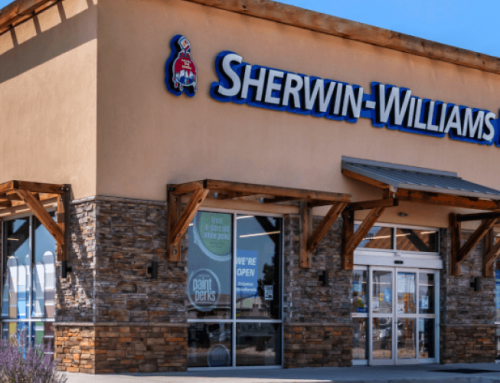When it comes to painting projects, taking the necessary steps, in the beginning, is what leads to a high-quality finish with longevity and visual beauty. Customers often overlook priming and sealing the substrate, but a step that can make or break a project.
Paint & Decorating Retailer spoke with two retailers who have taken new approaches to help their customers purchase primer and sealer. They share three best practices for creating a profitable primer and sealer category.
The Starting Point
 Jason Taylor, president of Perspectives in Lexington, Kentucky, says each sale starts with his employees becoming educated on the customer’s project. The store’s employees ask customers what type of substrate they are working with, the scope of their project and the climate—all important factors in choosing the right primer and the best applicator for the job.
Jason Taylor, president of Perspectives in Lexington, Kentucky, says each sale starts with his employees becoming educated on the customer’s project. The store’s employees ask customers what type of substrate they are working with, the scope of their project and the climate—all important factors in choosing the right primer and the best applicator for the job.
Taylor says roughly 60% of his customers are DIYers, who often need more education than contractors, but he also sees professionals who need guidance.
“Some contractors don’t necessarily have the background knowledge for some of their projects,” Taylor says. “They may have only done interior walls and now they have somebody wanting them to paint the exterior of a house. Every situation requires a different skill set, and we try to provide that knowledge to every customer.”
Safety First
Another piece of education Taylor instills in his customers buying primer and sealer is how to safely use these products.
“With any solvent-based product, you need to keep ventilation moving through the area,” Taylor says. “Air needs to keep moving through the space because almost everything sold now is oxygen-cured, meaning you need to exchange the air in the area, not just move it around.”
Taylor says wearing the proper personal protective equipment (PPE) is also crucial when working with these kinds of materials.
Waterborne products have been trending, with more options coming from suppliers, Taylor says. These waterborne products are cutting his customers’ job times in half and often are a safer option. Waterborne primers dry much faster than other kinds, allowing the user to apply multiple coats per day.
“Oil-based polyurethane used to be one of the only types of products on the market,” Taylor says. “Now we have a lot of waterborne finishes that are as good, if not better, than traditional polyurethane options.”
Navigating Regulations
With 18 states and Washington D.C. having enacted restrictions on volatile organic compounds (VOCs), retailers have had to stay educated on compliance when ordering and stocking products.
Colorado is one of the states with restrictions on VOC products and where Adeline Smith, president of Old Western Paint Co., works.
Smith has worked at Old Western Paint for
48 years and has seen a major shift in what kind of products her suppliers are selling, including a move away from oil-based primers. Fortunately, manufacturers have pivoted to offer more VOC-compliant options.
“We are seeing a lot of VOC-compliant primers being used, but not as much as waterborne primers,” Smith says. “Non-VOC compliant products are shrinking in availability, so we adjusted our product selection accordingly to still meet our customers’ project needs.”
Product Testing
Smith says her team tests the VOC-compliant products before putting them on the shelves.
“You don’t want to bring anything into your store without first knowing what to warn your customers of,” Smith says.
Taylor has also found success in testing products before stocking. When a salesperson comes to him with a new product line, he runs it through multiple tests. One such test includes testing out different primers and sealers on various substrates to see how they take to different materials. 
If an employee is working on a project in their home, Taylor sends them home with a product for them to use and give their feedback on.
The third way Taylor tests products is by giving them to frequent commercial customers. Contractors working on jobs usually don’t want to try out products that will cause them extra work, but for paint, primer and sealer, the work can be painted over. Taylor values everyone’s feedback because knowing if a product will perform like its counterpart is important with new eco-friendly products.
“You want somebody to give you an honest opinion on the product,” Taylor says. “It’s not a formal process but we like to know what our customers think of a new product before we start to carry it.”







